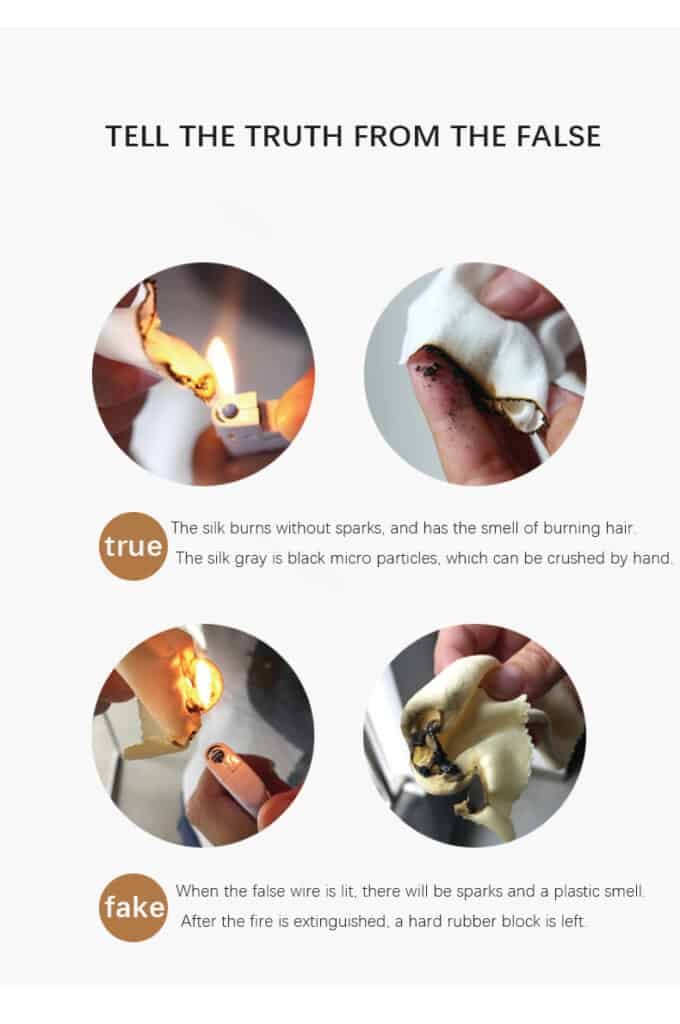Pillowcases are made with different types of materials. Some of these materials include satin and silk. This article takes a detailed look at the major differences between satin and silk pillowcases. Read on to find out more and make an informed decision before buying.
What is a silk pillowcase?
Silk, a popular luxury fabric, is a natural fiber produced by moths and silkworms. The sticky liquid is excreted by the silkworm and pushed out through its mouth, and the worm performs the figure 8 roughly 300,000 times to make its cocoon.

If allowed to hatch, the thread will be destroyed. The thread has to be unwounded before the caterpillar hatches to a moth.
To ease the bonding agent and unwind the thread in the cocoon, heat is applied with either steam, boiling water, or hot air. This process, though, leads to the death of the caterpillar.
Pillowcases made from silk are called silk pillowcase, and it gives the pillowcase a classy feel making them one of the most sorted after pillowcase in the market.
Pros
- Silk is the byproduct of insects and does not include any kind of synthetic material. It is the best choice when looking to get a natural product.
- Silk breathes and helps to regulate the temperature of the body. It naturally helps to keep warm during the winter and cools the body temperature in the summer. This helps to reduce the level of discomfort while sleeping.
- Silk is tightly woven, and as a result of this, allergens and dust mites cannot easily get through the weave. This makes the irritation caused by silk pillowcases to users’ overtime, a lot less.
- Silk is good for the hair. The weave of the silk pillowcase helps to keep the hair full of moisture and naturally soft by reducing the frizz during the night.
- Just as it is good for the hair, silk is also very good for the skin. Silk contains an amino acid, giving extra collagen to the skin, keeping the skin soft, and reducing aging signs. Silk, unlike cotton, does not dry up the skin at night by taking moisture from it; rather, it helps to hydrate the skin. Silk also helps the skin regenerate because of its cooling abilities.
- The silk pillowcase, as already stated, has a luxurious feel. For this reason, it is used by hotels and other large brands in the world and is also preferred in homes.
Cons
- Silk is more expensive compared to satin because it takes a lot of silkworms to produce it.
- Silk’s maintenance is high. It cannot be washed in a washing machine. Silk requires hand washing, or the setting of the washer used to be delicate.
What is a satin pillowcase?
Satin is a method of weaving. It is not a piece of fabric, and it does not come from a natural source, which is not known by many people. The satin process involves weaving over several threads and under one. For instance, a 4/1 satin weave is gotten by weaving over four threads and under one.
Pillowcases made with the satin weaving method are known as satin pillowcases. A lot of satin pillowcases are made from several synthetic fibers. Some of the fibers include nylon, polyester, rayon silk. This type of weaving gives the pillowcase both a shiny, soft side and a matte, dull side.
Satin is considered to be one of the best alternatives to the silk pillowcase.
Pros
- Satin is a manmade fabric, and the amount of labor required to make it is lesser than that of silk. This makes it considerably cheaper than silk in production. It has a more luxurious feel when compared to cotton.
- It can easily be found in stores since its production is quicker and cheaper.
- Unlike silk pillowcases, where most of them have to be hand-washed, satin pillowcases can be washed with a machine using any setting.
- Although not as endowed as silk, satin does possess some moisture-providing abilities and helps make the skin look younger.
Cons
- Although being the closest alternative to silk, satin is not as smooth as silk when felt.
- Satin is not as tightly woven as silk. Therefore, it is not as protective against allergens and dust mites as silk.
- Satin, although better than the other fabrics, is not as adaptive to temperature as silk.
How to tell the difference
Already, the difference between silk and satin is apparent, but knowing how to distinguish between silk and satin is also very important. Silk’s sheen is quite multi-colored. This is due to the silk’s standard charmeuse weave’s triangular structure that refracts light differently from different angles. If the shine is too much, it could be polyester. Too much shine indicates a synthetic fabric. Rubbing the fabric between fingers makes it warm. Fake silk won’t experience a temperature change, whereas real silk will get warmer. If real silk is burnt, it smells like human hair burning, and the flame will go out quickly when the source is taken away. Fake silk burns rather quickly, and smells like plastic, and will continue melting even after the source of the flame has been removed. The ashes from burning real silk turn to powder easily when grounded. The ash is black and crispy. Fake silk’s ash is sticky and not easy to break apart. Price is another factor. As already stated, silk is more expensive than satin.

Conclusion
Although they are simultaneously used, silk and satin are not the same, and the differences have been shown above. Choosing the right kind of pillowcase helps keep the skin, hair, and even eyelashes in good shape and form. Ensure that you consider all the pros and cons listed above before choosing a pillowcase.



